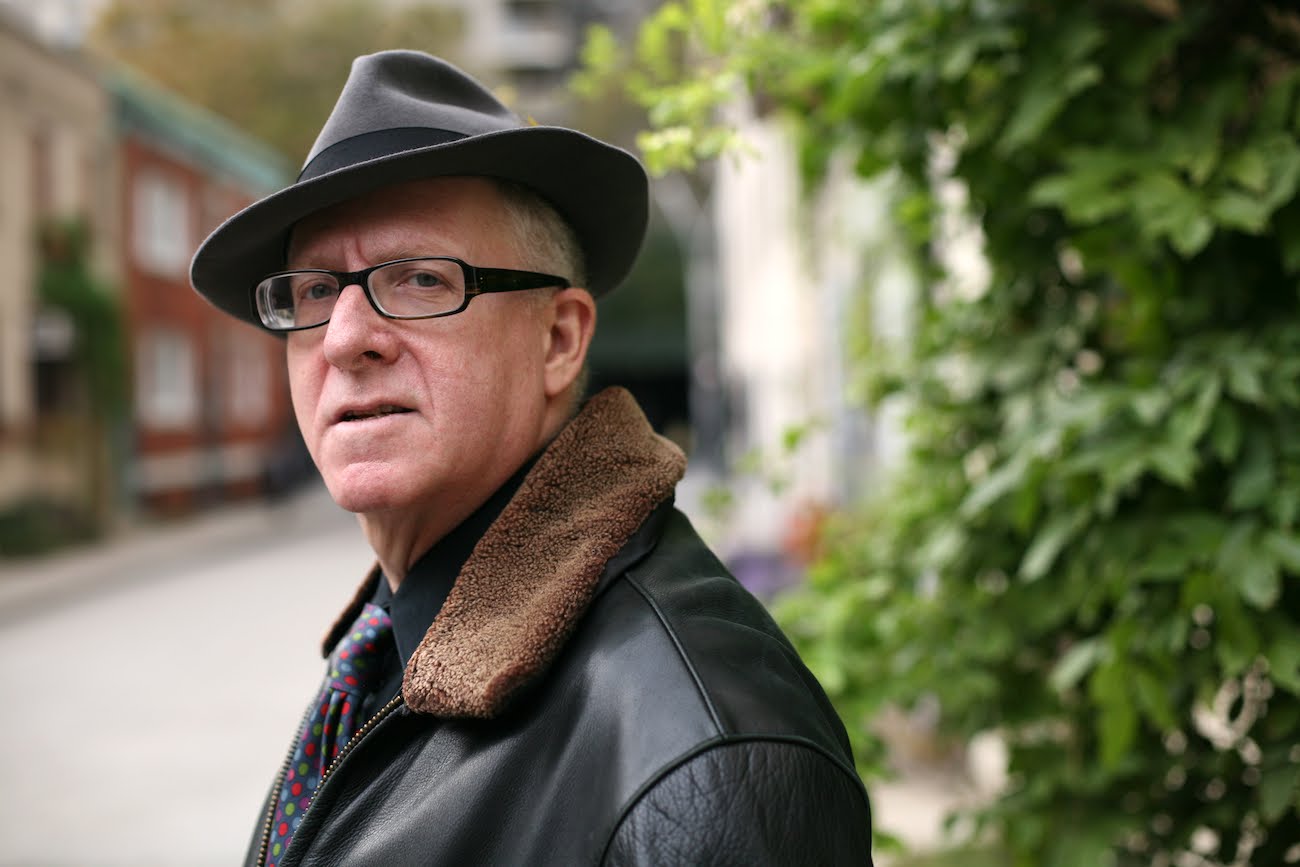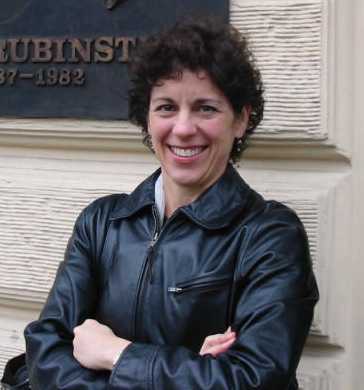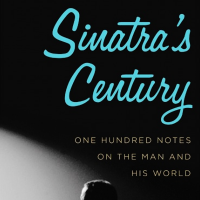 So happy and honored that David Lehman, the de facto dean of American Poetry is this week’s Featured Creative. Unlike so many academics in positions of authority (he’s head of the Poetry MFA division at The New School), Lehman is incredibly disciplined about walking the talk of continuously producing new writing himself and mentoring his students. Lehman has published several volumes of poetry–most recently his New and Selected (Scribner, 2013)–including his accessible, witty, thought-provoking collections that come from his personal challenge of creating a poem a day. He has also edited anthologies of other poetry genres (erotica, prose poems) and produced several acclaimed works of cultural history, the latest being on Frank Sinatra. Unlike so many of his peers, Lehman is no bookish ivory tower loner, but a maestro of creating community. Every year Lehman invites a new guest editor to helm the selections and discover new voices for the annual Best American Poetry series (which he created in 1988). The other half of the Lehman dynamic duo is his wife, Stacey Harwood-Lehman, who curates the award-winning Best American Poetry Blog–and this week’s Ideablog posts. Whether discovering new talent for an anthology, discovering new ways to run a weekly quiz contest, or discovering a new form for a biography of a beloved pop-culture icon, David Lehman proves himself a explorer of the creative realm with an impressive knack for finding gold wherever he goes.
So happy and honored that David Lehman, the de facto dean of American Poetry is this week’s Featured Creative. Unlike so many academics in positions of authority (he’s head of the Poetry MFA division at The New School), Lehman is incredibly disciplined about walking the talk of continuously producing new writing himself and mentoring his students. Lehman has published several volumes of poetry–most recently his New and Selected (Scribner, 2013)–including his accessible, witty, thought-provoking collections that come from his personal challenge of creating a poem a day. He has also edited anthologies of other poetry genres (erotica, prose poems) and produced several acclaimed works of cultural history, the latest being on Frank Sinatra. Unlike so many of his peers, Lehman is no bookish ivory tower loner, but a maestro of creating community. Every year Lehman invites a new guest editor to helm the selections and discover new voices for the annual Best American Poetry series (which he created in 1988). The other half of the Lehman dynamic duo is his wife, Stacey Harwood-Lehman, who curates the award-winning Best American Poetry Blog–and this week’s Ideablog posts. Whether discovering new talent for an anthology, discovering new ways to run a weekly quiz contest, or discovering a new form for a biography of a beloved pop-culture icon, David Lehman proves himself a explorer of the creative realm with an impressive knack for finding gold wherever he goes.
~Victoria C. Rowan, Ideasmyth Creatrix-in-Chief
***
On May 14, 1998, I phoned David [Lehman] just as he learned of Frank Sinatra’s death. “I can’t talk now,” he said. “Sinatra has died,” and he promptly hung up, most likely to listen to a Sinatra disc and have a good cry.
At the time I knew that David loved Frank Sinatra but I wondered why he was rendered speechless at the news of his death. They never met; David hadn’t even seen him perform live. What he had was a collection of Sinatra CDs, cassettes and vinyl from every period of his long career: the Columbia years, the Capitol years and so on. There was a little record/CD store on Bleecker Street and David couldn’t walk by without stopping in to search for a new release. In the years since Sinatra died, David’s love for Sinatra grew and deepened.
Even though David is an accomplished prose writer (in addition to being a poet), when he proposed to write a book about Sinatra he wondered how he could make the subject–about which millions of words had already been written–fresh and new. His solution was to create a form, which he calls the century. Dividing the book into 100 parts, one for each year since Sinatra’s birth, allowed him to mix things up and switch approaches. There are, for example, parts in present tense or with second person point-of-view. Some sections are short, consisting of a single quotation; other numbered sections might be in the form of a narrative, an argument, a playlist, even a multiple-choice.
Here’s what Publishers Weekly has to say about Sinatra’s Century: One Hundred Notes on the Man and His World, due in stores on October 27:
In this set of affectionate and vibrant fan’s notes, poet and critic Lehman (A Fine Romance) celebrates Ol’ Blue Eyes’s 100th birthday (December 12) with 100 impressionistic reflections on the singer’s successes and shortcomings. He includes mentions of Sinatra’s tempestuous marriage to Ava Gardner and his relationships with Mia Farrow, Lauren Bacall, and Marilyn Monroe, among others. Lehman colorfully points out that Sinatra remains a part of the American cultural scene, with his songs playing in commercials, as background music in restaurants, and in opening and closing credits of movies and television shows such as Wall Street and The Sopranos. He also has a signature brand of bourbon named after him. Sinatra stays in the public eye, Lehman observes, not only because of his work as a movie actor and a singer but also because of his nonconformity and his fondness for being a maverick. Sinatra’s vocal range and phrasing were so pure and powerful that he had teenage girls swooning from the moment he stepped on the stage. Lehman describes Sinatra’s friendly rivalry with Bing Crosby, his lifelong friendship with Dean Martin despite their widely disparate personalities (Martin liked to get up early, Sinatra partied late into the night), his perfectionism, and his famous clashes with gossip columnist Rona Barrett. In the end, Lehman’s lively reflections wonderfully celebrate Sinatra’s enduring impact on his own life and on American culture.
One aspect of Sinatra that David touches on in his book is Sinatra’s kinship with the Jewish people. He discussed this recently in a conversation with journalist Ben Ivry of the Forward:
Benjamin Ivry: What are the origins of Sinatra’s lifelong affection for the Jews and Israel?
David Lehman: I know that when Sinatra talks about his childhood in Hoboken, [New Jersey], he refers to the Jewish population with a certain affinity. Apparently, the Italians and the Jews got along well and lived in close proximity. The Irish population seemed to occupy a different zone of the city. Sinatra had a natural sympathy for other minority groups, a real concern for the plight of African Americans.
***
The 1945 short film “The House I Live In” shows Sinatra defending a Jewish-looking boy bullied by schoolmates, saying that only a “Nazi or somebody as stupid” cares about religious differences. Do you find this film convincing today?
I find the singing of the song to that group of little kids to be incredibly moving. You can’t imagine Dean Martin singing “The House I Live In,” with his comic manner and natural ironic sense. When Sinatra sings “The House I Live in,” he means it — he loves America. I find it incredibly moving. It was released at a time when a statement in favor of tolerance meant something important in the United States. Sinatra made that film with Jewish colleagues who were very left-wing and later blacklisted, at a time of America Firsters and Father Coughlin and Charles Lindbergh.
You can read the full interview here.
 ~~~David Lehman was born in New York City. He initiated The Best American Poetry series in 1988 and remains series editor of the annual anthology. He is the author of seven books of poems, most recently New and Selected Poems (Scribner, 2013) and Yeshiva Boys (Scribner, 2009). Among his nonfiction books are The State of the Art: A Chronicle of American Poetry 1988-2014, A Fine Romance: Jewish Songwriters, American Songs (Nextbook, 2009), The Last Avant-Garde: The Making of the New York School of Poets (Anchor, 1999) and The Perfect Murder ( Michigan, 2000). He edited Great American Prose Poems: From Poe to the Present, (Scribner, 2003) and The Best American Erotic Poems (Scribner, 2008). He edited The Oxford Book of American Poetry, a one-volume comprehensive anthology of poems from Anne Bradstreet to the present. He teaches writing and literature in the graduate writing program of the New School in New York City. He lives in New York City and spends summers in Ithaca, New York.
~~~David Lehman was born in New York City. He initiated The Best American Poetry series in 1988 and remains series editor of the annual anthology. He is the author of seven books of poems, most recently New and Selected Poems (Scribner, 2013) and Yeshiva Boys (Scribner, 2009). Among his nonfiction books are The State of the Art: A Chronicle of American Poetry 1988-2014, A Fine Romance: Jewish Songwriters, American Songs (Nextbook, 2009), The Last Avant-Garde: The Making of the New York School of Poets (Anchor, 1999) and The Perfect Murder ( Michigan, 2000). He edited Great American Prose Poems: From Poe to the Present, (Scribner, 2003) and The Best American Erotic Poems (Scribner, 2008). He edited The Oxford Book of American Poetry, a one-volume comprehensive anthology of poems from Anne Bradstreet to the present. He teaches writing and literature in the graduate writing program of the New School in New York City. He lives in New York City and spends summers in Ithaca, New York.
 ~~~Stacey Harwood, Managing Editor of the Best American Poetry Blog, was until recently a policy analyst for the New York State Public Service Commission, the agency that regulates gas, electric, water, and telephone service in New York State. Her poems and essays have been published or are forthcoming in The LA Times, Michigan Quarterly Review, Humor, Lit, Saveur, Tablet, the Wall Street Journal and elsewhere. Paul Muldoon selected her poem Contributors’ Notes for The Best American Poetry 2005. She is the poet laureate of the New York City Greenmarket.
~~~Stacey Harwood, Managing Editor of the Best American Poetry Blog, was until recently a policy analyst for the New York State Public Service Commission, the agency that regulates gas, electric, water, and telephone service in New York State. Her poems and essays have been published or are forthcoming in The LA Times, Michigan Quarterly Review, Humor, Lit, Saveur, Tablet, the Wall Street Journal and elsewhere. Paul Muldoon selected her poem Contributors’ Notes for The Best American Poetry 2005. She is the poet laureate of the New York City Greenmarket.

